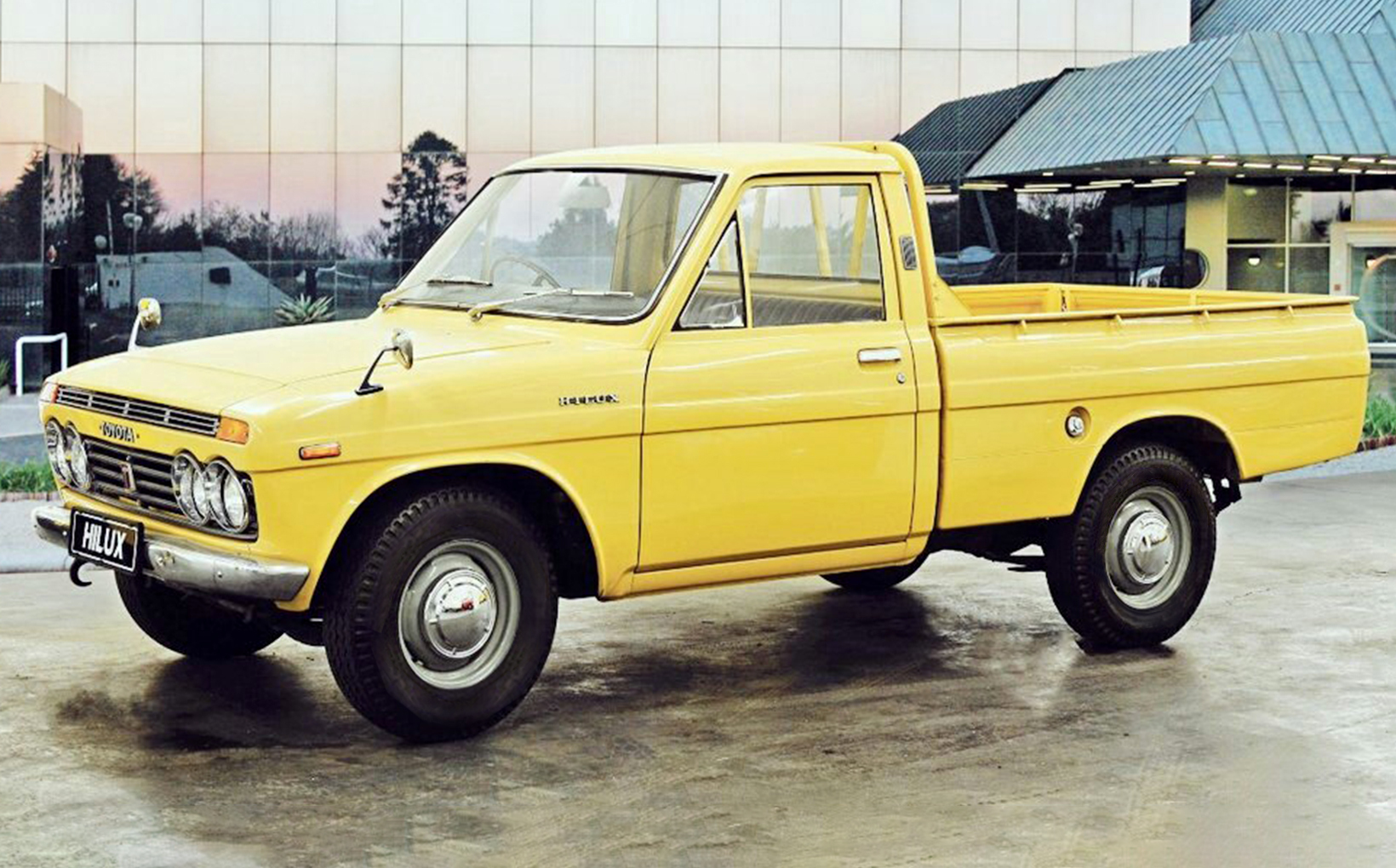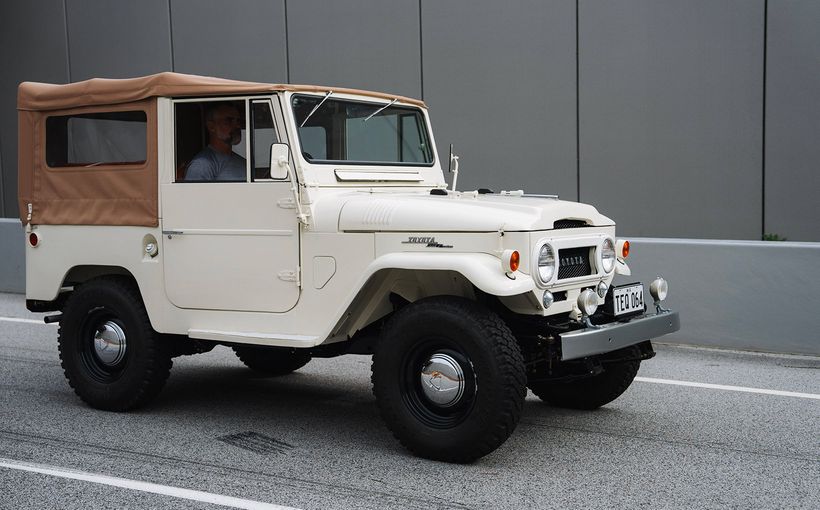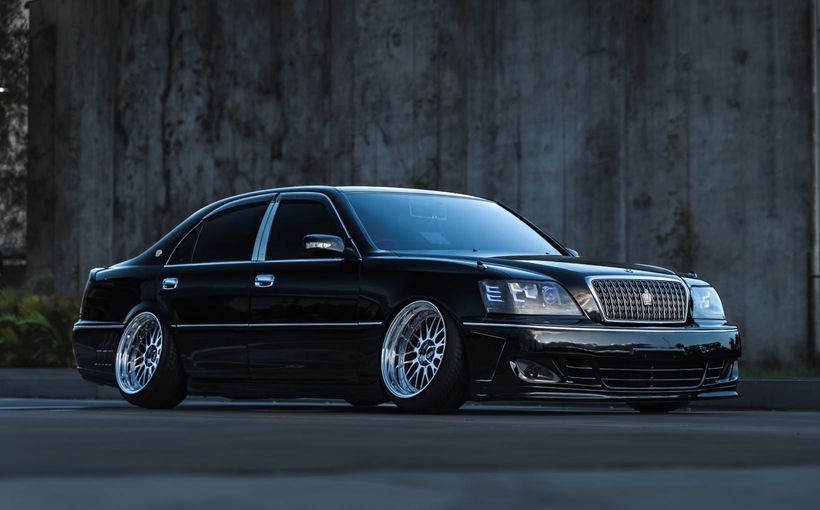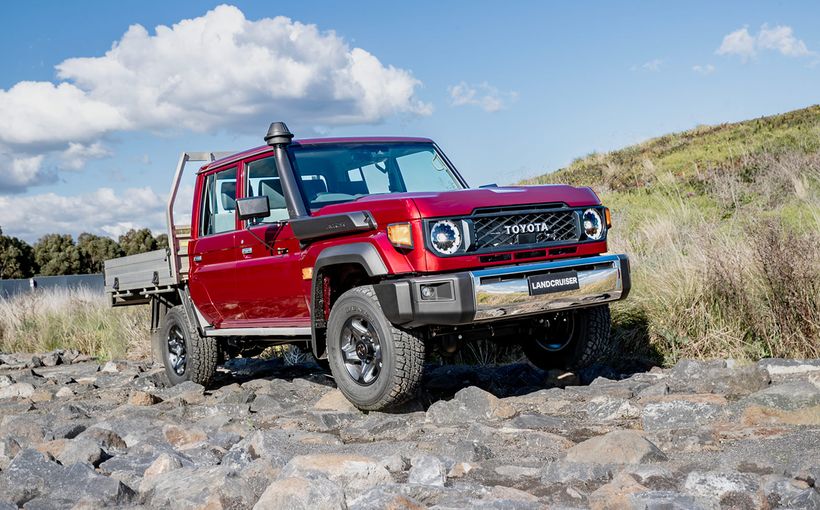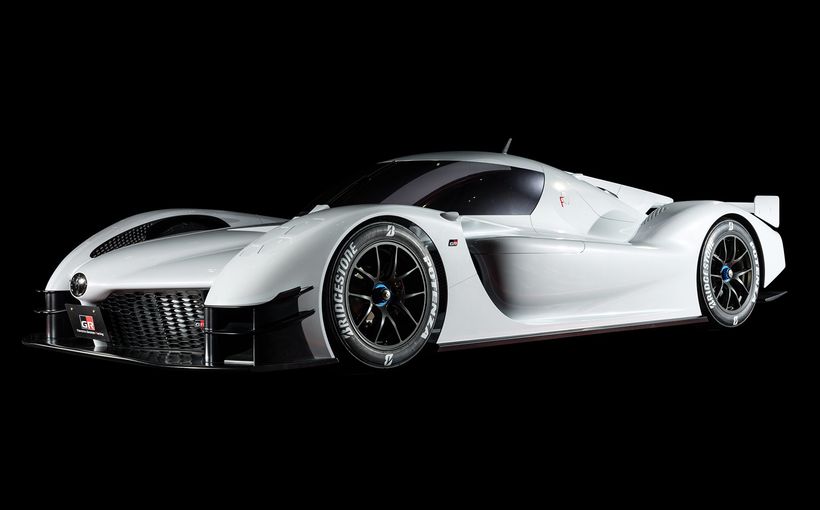Toyota HiLux: How Japan reinvented the Aussie ute

Toyota has a history of creating light commercial vehicles (LCV) which have become segment leaders and global icons, like the HiAce van and Land Cruiser off-roader. Just as successful and iconic is the HiLux, which proved so popular that Australian-made utes derived from passenger cars became redundant.
Its rapid growth in popularity in Australia was not only because of an ‘unbreakable’ reputation, as the HiLux (and numerous Japanese rivals) was assisted in its ascendency by favourable federal laws applying to imported LCVs. Even so, success was inevitable.
It started out as a curious contradiction, given that its name - an abbreviation of the words ‘High’ and ‘Luxury’ - was applied to a bare-boned utilitarian workhorse! However, it has evolved into a vastly more comfortable and versatile vehicle that often serves dual roles as weekday workhorse and weekend escape machine. It offers a choice of 4x2 and 4x4 drivetrains and numerous body styles including an SUV wagon derivative.
The HiLux has been Australia’s best-selling vehicle since 2016, is sold in more than 180 countries and regions and is manufactured in numerous plants around the world. With total production of more than 20 million units across eight generations, its enduring popularity is part of an ever-evolving global success story showing no signs of a final chapter.

Image: Toyota
Humble beginnings
The seeds of HiLux creation were planted in the early 1960s when rival Japanese manufacturer Hino was producing both its Contessa passenger car and Briska pick-up. They were based on running gear shared with Renault’s 4CV, which Hino was manufacturing under licence as part of Japan’s post-war recovery.
The original FG series Briska was launched in 1961 with a tiny 893cc four-cylinder petrol engine and an optimistic 750kg payload rating. It remained in production until 1965 when replaced by the beefier FH series with a larger 1.3-litre four and one-tonne payload.
In 1966, Toyota and Hino formed a co-operative alliance (Hino would eventually become a wholly-owned subsidiary of Toyota) which saw Hino concentrate on its heavy commercial truck and bus manufacturing, leaving Toyota to focus on LCVs.
At the time, Toyota offered the stark contrast of its robust but rough-riding Stout pickup with ladder-frame truck chassis, leaf-spring solid axles and heavy-duty 1.5-2.0-tonne payload, or smoother riding half-tonne utes derived from its Crown and Corona passenger cars.

Image: Toyota
In 1963 it had attempted to bridge this gap with the Light Stout; a lighter duty version with coil-spring independent front suspension designed to provide a smoother ride. However, it was largely dismissed by commercial buyers as being a downgraded or ‘weaker’ version of the Stout.
Clearly, to hit the bullseye, Toyota needed an all-new pickup that combined smart styling and passenger car-style comfort with a one-tonne payload rating.
Hino provided a template in April 1967 with the release of the Toyota Briska; the first product of the Toyota-Hino alliance. This body-on-frame one-tonner was the latest FH series of the Briska built at Hino’s Hamura plant in Tokyo, but equipped with a Toyota GY10 model code, Toyota badgework, four headlights and a more powerful engine.
Although it was in production for less than 12 months, the badge-engineered Briska provided a crucial starting point for Toyota in creating its new breed of pickup.

Image: Toyota
First generation 1968-1972
There was no evidence of ‘High Luxury’ when the HiLux when launched in March 1968 (we think this name was chosen to make a clear distinction from the ‘LoLux’ Stout!) but it was clearly a more stylish, comfortable and refined workhorse than the models it succeeded.
The HiLux received considerable engineering input from Hino and was assembled in its Hamura plant. It was effectively an enhanced version of the Briska with fresh four-headlight styling, robust body-on-frame construction, smooth-riding double-wishbone/coil-spring front suspension, leaf-spring live rear axle and drum brakes.
It rode on a 96-inch (2450mm) wheelbase which was some 15 inches (380mm) shorter than a contemporary Falcon or Holden ute, yet offered a useful 1850mm load length in a load tub that was separate from the cab. That meant it could be easily replaced by custom-made service bodies, which offered versatility that could not be matched by local utes. Its relatively short wheelbase also ensured the HiLux was highly maneuverable and its light 1040kg kerb weight contributed to low steering effort.
It was powered by a 76bhp (57kW) 1.5-litre inline four petrol engine paired with a column-shift four-speed gearbox. Although ‘three on the tree’ was standard issue in Aussie-made utes, which allowed clear legroom for three big blokes across a bench seat, adding a fourth cog to a column-shift meant the smaller HiLux could do the same (at a squeeze) and offer a broader spread of gears to optimise performance.


Image: Toyota
Significantly, its one-tonne payload rating was about double that of local rivals. On reflection, although the HiLux was often derided as a ‘buzz-box’ or ‘Jap crap’ in comparison to our sixes and V8s, Aussie manufacturers were already on notice - even though they probably weren’t aware of it. Toyota, like numerous Japanese marques, was using Australia as a test market in which to refine its exports before global expansion.
Toyota also maintained local sales of the Stout to provide higher payloads and an alternative to vehicles like locally-assembled RHD versions of Ford’s F-Series pickup, even though the four-cylinder Stout was smaller and comparatively underpowered.
To maximise export sales, the HiLux expanded into a range in 1969 with the addition of a long wheelbase variant with a 2250mm load tub. This 400mm extension made the LWB HiLux more than competitive with local sedan-based offerings.
In 1971 the engine capacity was increased to 1.6-litres in most export markets except North America where a variety of exclusive engines were offered, topped by a spirited 2.0-litre SOHC inline four with 109bhp (81kW).
The success of the new HiLux in offering a more car-like ride quality was part of a broader product realignment. It allowed Toyota to cease production of its half-tonne utes derived from Crown and Corona sedans, as it wanted to make a clear distinction between passenger cars and LCVs to enhance the prestige of the Crown and Corona nameplates.
This again was in stark contrast to Aussie manufacturers, which took great pride in deriving half-tonne utes from each new generation of their full-size family sedans. This was not seen to be tarnishing the prestige of these popular models at all. If anything, it was worn as a badge of honour!

Image: Toyota
Second generation (1972-1978)
The next HiLux was a mild evolution with revised styling that maintained four headlights, plus improved comfort and a choice of short-wheelbase (45mm longer than the first-gen) and long-wheelbase (10mm longer) variants.
Dual-circuit braking was enhanced with servo-assistance and load-sensing proportioning valves which reduced the chance of rear wheel lock-ups, particularly when unladen. In the US, the HiLux name was dropped in favour of ‘Toyota Truck’ in response to a similar strategy by its Datsun rival in appealing to US buyer terminology.
The 1.6-litre engine was carried over for most export markets until 1973 when it was upgraded to the punchy SOHC 2.0-litre unit previously offered exclusively to the Americans, who in turn progressed to an even larger 2.2-litre engine in 1975. This helped to claw back performance losses caused by increasingly tough emission controls, particularly in smog-plagued California.
HiLux buyers also had a choice of transmissions beyond the standard four-speed column-shift, with either five-speed manual floor-shift or three-speed automatic with column or floor-shift. Ticking the floor-shift option came with individual bucket seats which added some unlikely sporting flavour.
With these new options, the HiLux was already expanding its appeal beyond a pure workhorse role to embrace a booming new market for 'mini-truck' recreational vehicles (RVs) with weekend ‘escape machine’ appeal.

Image: Toyota
Third generation (1978-1983)
The next HiLux generation brought fresh styling with singular headlights plus a new dual-cab body variant with seating for up to five occupants. Even though the rear bench seat was a squeeze for three big Aussies, the dual-cab was a versatile option that locally-made utes could not provide.
The dual-cab expanded the HiLux’s appeal for not only crew-carrying commercial buyers but also active families and there was a sporty new SR5 model grade. At launch the 1.6-litre and 2.0-litre SOHC fours plus manual and auto transmissions were carried over.
In 1979 Toyota introduced the first 4x4 HiLux, with its Land Cruiser-style leaf-spring live front axle and subsequent harsh ride contrasting with the smoother and more supple independent coil-spring front suspension of the 4x2 model.

Image: Toyota
It was equipped with a part-time, dual-range 4x4 transmission, which was another desirable option that Aussie-made utes could not match as the HiLux continued to eat into their sales.
The 4x4 was launched with the 2.0-litre engine but like 2x4 models was soon upgraded to the larger 2.2-litre and definitive 2.4-litre four in 1981. The HiLux also offered its first diesel engine option that year with a 2.2-litre oil-burner producing modest outputs.
The 4x4 HiLux’s raised ride height and all-terrain capability greatly increased its appeal as both an off-highway workhorse and recreational vehicle, particularly in the lucrative US market where Toyota partnered with numerous aftermarket suppliers to create RV special editions.
These included eminent motorhome manufacturer Winnebago, which produced a small run (about 1500 units) of ‘Trekker’ HiLux 4x4s similar in design to the popular Ford Bronco, Chevrolet Blazer and Dodge Ramcharger.
The Trekker was equipped with a fiberglass canopy that enclosed the load tub, with the HiLux’s rear cabin bulkhead and window removed to provide internal access to this spacious new enclosure, complete with a row of rear seating. These low-volume HiLux models inspired in-house development of the iconic 4Runner.

Image: Toyota
Fourth generation (1983-1988)
There were numerous changes for the fourth generation, with improved interior comfort and new exterior styling characterised by prominent ‘blister’ flares over the front and rear wheels.
The fourth-gen introduced another new body variant called the Xtra-Cab, which was a stretched version of the single-cab with additional space behind the seats. This welcome increase in cabin storage made the Xtra-Cab a popular cross-over of single and dual-cab designs.

Image: Toyota
Toyota also launched the 4Runner three-door five-seat wagon derivative of the HiLux. The 4Runner (sold as the HiLux Surf in some markets) was clearly inspired by the Winnebago Trekker, but with larger glass areas that provided sharper aesthetics and a brighter and airier feel. It was available in two model grades topped by the sporty SR5.
There were also significant mechanical upgrades, particularly in the 4x4 model which after the first year of production switched to Toyota’s new torsion bar independent front suspension with separate driveshafts. This provided a more civilised ride than the previous live axle and leaf springs, which was more in keeping with the HiLux name.


Image: Toyota
Depending on which country it was sold in there was an unprecedented choice of powerplants, including three diesels topped by a 2.5-litre turbocharged four. There were also six petrol engines, comprising five inline fours up to the premium 2.4 litre fuel-injected and turbocharged version with 135hp (101kW). This was the first time that turbocharging was applied to HiLux.
Those wanting the ultimate in performance, though, could opt for a new petrol V6 which was the first time a HiLux was available with more than four cylinders. This hearty 3.0-litre unit produced a peerless 150hp (112kW).

Image: Toyota
Fifth generation (1988-1997)
HiLux styling evolved with a revised grille and more rounded wheel arch flares, while cabin comfort and appointments continued to be upgraded with car-like features including factory air-conditioning, power windows, full carpeting and more.
The popularity of the Xtra-Cab prompted another increase in cabin length to allow more internal storage space and even a small pair of optional rear seats (not recommended for tall adults!) to create a 2+2 configuration. There was also an extra-long 3099mm wheelbase model to cater for customers needing even more load space.
Depending on country of sale, the fifth-gen HiLux was available with a choice of four cylinder or V6 petrol engines plus two new four-cylinder diesels in 2.4-litre and 2.8-litre displacements. The fifth-gen was also the last HiLux sold in the US, replaced by the full-size Tacoma in 1995.

Image: Toyota
Sixth generation (1997-2005)
This was the last HiLux built in Japan before production moved to Thailand. It was also the last HiLux range to be sold in its home country. The sixth-gen styling was again a mild evolution of a globally successful design, along with further enhancements of interior comfort and features.
The automatic transmission added an extra cog to become a four-speeder and tightened emission regulations prompted the introduction of four new petrol engines (availability depending on country/region), from the smallest inline four in base 2x4 workhorse models up to the premium V6. Two four-cylinder diesels were also offered.
This generation also heralded the establishment of a single wheelbase and overall length for future generations, that could accommodate three different styles comprising single-cab, extra-cab and dual-cab with three corresponding load tub lengths.
With sales of local Ford and Holden utes to traditional tradie buyers in terminal decline, Holden heralded a significant shift in its product strategy in 2000 by equipping its latest Commodore-based VU ute with independent rear suspension.
This was in recognition that locally-made utes had no choice but to evolve into more stylish and sporty lifestyle machines, given that their traditional workhorse market was all but lost to the HiLux and Japanese rivals. This transition was enhanced by HSV and FPV embracing respective high performance Commodore and Falcon-based utes as part of their ‘special vehicle’ model line-ups.

Image: Toyota
Seventh generation (2005-2016)
This was unquestionably the most stylish HiLux to date. Comfort was also boosted with increased interior space, noise insulation and features, plus a smoother ride with coil-springs replacing torsion bars in new independent front suspension.
A variety of petrol and diesel engines were available, again depending on which country the HiLux was being sold in. A notable addition was a 4.0-litre VVT-i DOHC V6 which as its name suggested featured the latest variable valve timing to enhance performance and economy. Even so, it didn’t mind a drink!
This big six produced a gutsy 236hp (176kW) in stock form but Toyota Australia created a high-performance version for its TRD-branded HiLux ‘special vehicle’ equipped with a locally-developed supercharger installation that raised output to more than 300hp (224kW).

Image: Toyota
Toyota optimised its production and supply channels to keep HiLux pricing internationally competitive, as it was now being sold in more than 140 countries. To minimise shipping costs and pre-delivery delays, HiLux utes produced in major plants like Thailand, South Africa, Argentina and others were mostly delivered to countries within their own regions.
And as part of its International Multi-Purpose Vehicle (IMV) program, Toyota developed five new models from a single chassis platform comprising three HiLux variants, one minivan (Innova) and a new wagon (aka SUV) derivative called the Fortuner.

Image: Toyota
Eighth generation (2016-present)
In an increasingly competitive market, which included the 2011 launch of Ford’s all-new T6 Ranger, Toyota was forced to freeze its initial design plans and come up with something better. Much better in fact, which in no small way was accredited to substantial input from Australia in producing the best HiLux of them all.
The first new HiLux generation in more than a decade benefitted from six years of development by Toyota Australia engineers. This included more than 650,000km of testing in Australia and another 400,000km overseas; a staggering total of more than one million kilometres of hard bump and grind that resulted in a swag of improvements across the range.

Image: Toyota
They included largest-ever 3.5-tonne tow ratings, new 2.4-litre and 2.8-litre turbo-diesels with greater torque (the petrol V6 was included at launch by later dropped due to dwindling sales), new six-speed auto and manual transmissions, tougher chassis and bodies, sharper handling, improved off-road ability and lots more. It also served as the basis for a second-gen Fortuner to compete against numerous rivals in the 4x4 seven-seater wagon segment.
Significantly, it was during the eighth-gen’s reign that Holden ceased Australian manufacturing operations in 2017, with the Commodore ute being consigned to history alongside its Falcon-based nemesis, which had ceased production with the closing of Ford’s local manufacturing in 2016.
This scenario would have been unthinkable, of course, when the first Toyota HiLux arrived here in the late 1960s. However, the demise of the locally-made ute is a testament to the astounding global success of the HiLux, which is truly worthy of Super Model status.

